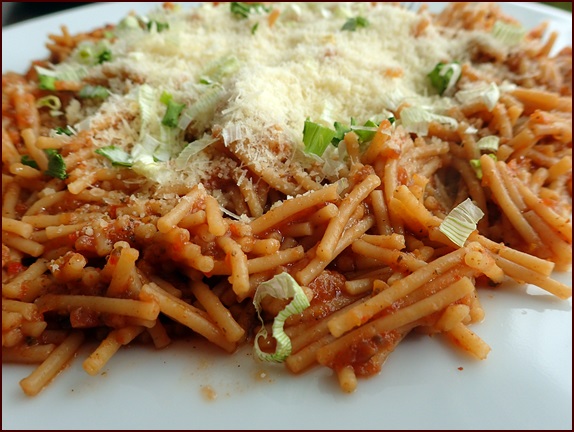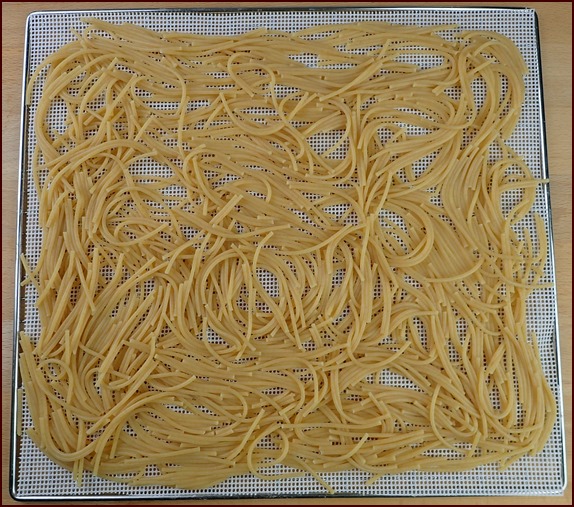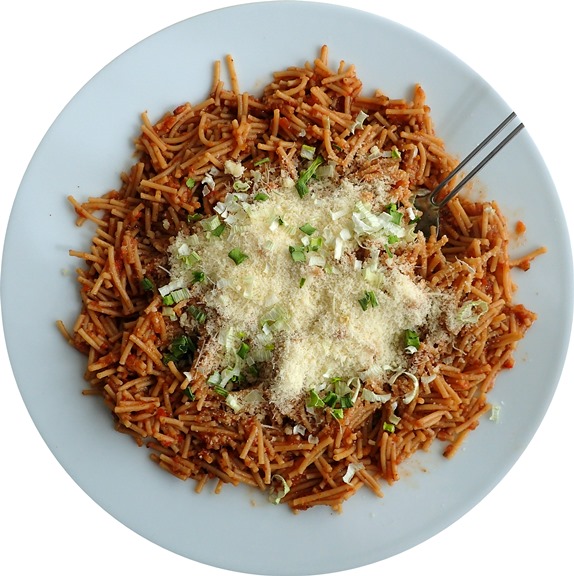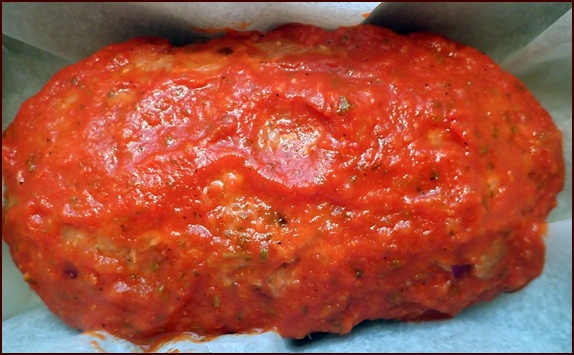| Back to Back Issues Page |
 |
|
Trail Bytes, March 2024: Are you ready for spaghetti? March 20, 2024 |
| Hello, This month’s topic of dehydrating spaghetti was inspired by my Swiss son-in-law, who runs half and full marathons. Thomas’s mountain-running skills saved us last summer when we hiked the 5-Lakes Trail at Pizol. Knowing we were not going to catch the gondola before it stopped running at 5 PM, we sent him ahead to talk the gondola operator into waiting for us. Otherwise, it would have been a long walk down. Dominique and I had dinner at Valérie and Thomas’s home on Saturday. Thomas ate a bowl of spaghetti, and the rest of us ate salad. He had a half-marathon to run in the morning and was following his usual practice of eating pasta the night before. I checked an article in Runner’s World, and the prerace pasta dinner is still popular with long-distance runners. Keri Gans, a registered dietician and nutritionist quoted in the article, said, “A prerace pasta dinner will give your body enough carbs to store some for later use. Your muscles and liver store glucose as glycogen, so the more miles you put in, the more glycogen you need in the tank.” A few other articles said that the stored glycogen gives runners a boost for the first 90 to 120 minutes. Thomas ran his half-marathon in 186 minutes, a very good time. Opinions vary about carb loading for long-distance running and cycling, but this I know for sure: backpackers go the distance, they burn a lot of calories, and 9 out of 10 backpackers love spaghetti. With that in mind, we dehydrate and serve up a plate of spaghetti for this month’s Trail Bytes.
Photo: Rehydrated spaghetti and tomato sauce powder. Topped with grated cheese and green onions. I used whole wheat spaghetti for this meal. The carbohydrate and protein content is about the same as regular pasta, but whole wheat has almost three times the fiber and significantly more minerals. A 100 gram portion of dry whole wheat pasta has 73 grams of carbohydrate, 14 grams of protein, and 9 grams of fiber. For most of the dehydrated pasta meals I make, I use between 50 and 70 grams of dried pasta. But those meals include additional proteins and vegetables. Since spaghetti was the highlight of this meal, I went with 100 grams, a quantity recommended by Italian chefs. Cooking SpaghettiBring 1 liter of water to a boil with a teaspoon of salt.Break 100 grams of spaghetti into fourths and drop into pot. Follow the recommended cooking time on the box to the minimum time. If the box says cook for 6–8 minutes, then stop cooking at 6 minutes. Dump cooked spaghetti into a colander and rinse briefly with cold water to stop cooking. Rinsing also helps keep the spaghetti from sticking together.
Photo: Cooked spaghetti on Cosori dehydrator tray covered with silicone mesh sheet. Precooked weight was 100 grams. Weight after cooking was 240 grams. Read my Cosori dehydrator review. Dehydrating SpaghettiSpread cooked spaghetti on dehydrator tray over a mesh sheet.Dehydrate at 135°F (57°C) for 4 hours, or until the spaghetti is snappy dry. Surprisingly, the dried weight of the spaghetti was 95 grams, a little less than it started out. Once dry, break spaghetti into smaller pieces by squeezing with hands or pushing down on it in a bowl. Smaller pieces are easy to eat with a spoon—no need to carry a fork on the trail.
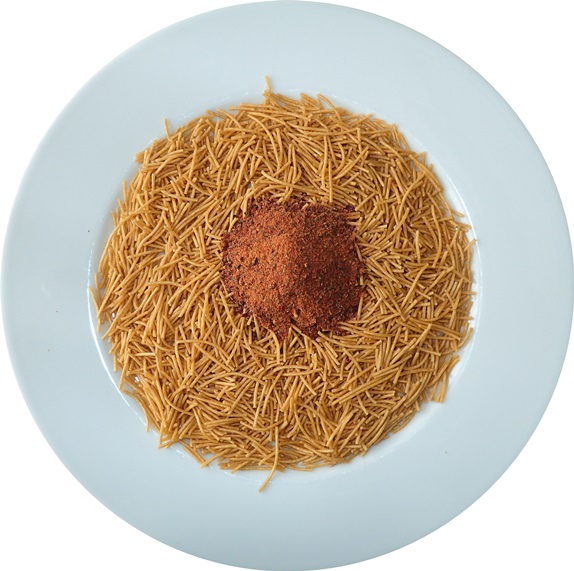
Photo: Dehydrated spaghetti with dehydrated tomato sauce powder before rehydrating. Rehydrating Spaghetti with Tomato SauceIngredients:
Place dehydrated spaghetti and tomato sauce powder in pot with water. Soak 5 minutes, then bring to a boil. Transfer pot to an insulated pot cozy and wait 15 minutes. Alternatively, add boiled water to the spaghetti and sauce powder in a Mylar bag or freezer bag. Insulate and wait 20 minutes. Top rehydrated spaghetti with olive oil, grated cheese and garnish of choice.
Photo: Rehydrated spaghetti and tomato sauce with olive oil and grated cheese. How was it?Ready-to-run delicious! The quantity was just right for a stand-alone pasta meal. I added olive oil as a healthy fat source for even more energy.
Photo: A meatball loaf ready for baking. This meal could be made even more substantial with the addition of dehydrated meatballs. You’ll find my recipe for making and dehydrating meatballs in Recipes for Adventure II: The Best of Trail Bytes.
Explore More:Dehydrating Tomato Sauce PowderThanks for reading Trail Bytes. See you next month.
Chef Glenn & Dominique Reply to this email with any questions or comments, or use this contact form. Visit my Backpacking Chef Facebook page for the lastest posts. Be sure to "follow" the page to continue seeing posts. If you received this newsletter from a friend and would like to subscribe (it's free), subscribe here.
|
| Back to Back Issues Page |
